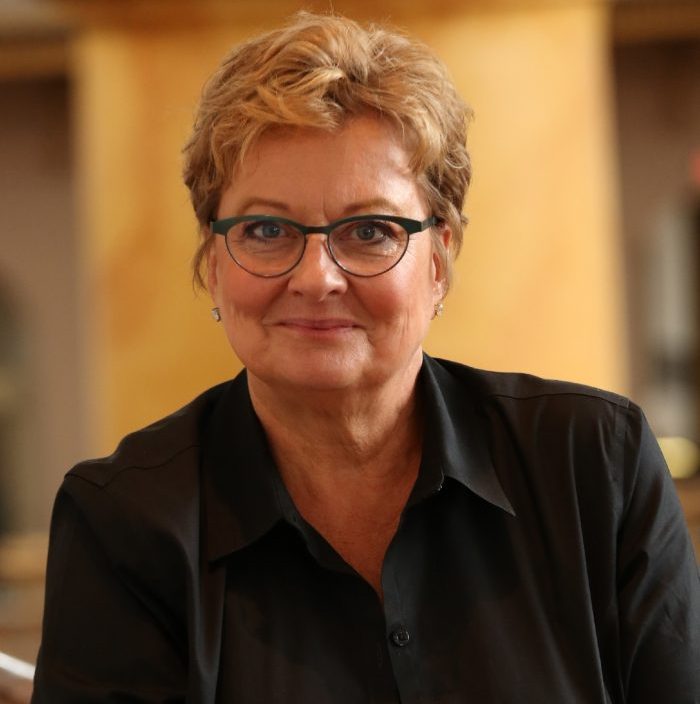
Nancy Beers joined the Center for Disaster Philanthropy in October as the program officer for the Early Recovery Fund. The CDP Early Recovery Fund—the organization’s largest to date– is a $2 million fund created to efficiently and effectively allocate money to organizations supporting the needs of vulnerable populations within communities affected by low attention disasters in the Midwest. The Fund will be tapped within two weeks to nine months after natural disasters — tornadoes, flooding, earthquakes, landslides and wildfires – in the states of Arkansas, Iowa, Kansas, Minnesota, Missouri, Montana, Nebraska, North Dakota, Oklahoma and South Dakota.
We sat down with Nancy after her first month in the job to get her insights.
CDP: How does the CDP Early Recovery Fund help to address those challenges?
Nancy Beers: Those five key challenges (see previous blog here) will direct the work we will be doing with communities and funders. As we help to develop those essential resources for low-attention disasters, we will also be collecting information and developing an evidence-based best practices document for working with communities affected by low attention disasters. It is exciting work and we feel honored to be doing this in collaboration with so many important partners.
CDP: From your experiences working with people on the ground, what are the biggest unmet needs that donors should know about?
Nancy: I believe the greatest need for a disaster-impacted community is early access to professional disaster support, education and training. The earlier the recovery phase takes place in a low-attention disaster, the better the long-term outlook. Early needs assessments are essential, as are trained disaster case managers using a shared database. But this all has to be driven by a grassroots-based, well-developed, long-term recovery group made up of informed and invested local leaders.
Few communities know how to do that – so someone needs to show them how and mentor them throughout that process. Also donors need to be know there are very few funded programs geared specifically to helping children recover from disaster trauma. We need to make sure those programs are more readily available.
CDP: How does this fund help to address those needs?
Nancy: The three main funding pools for the Early Recovery Fund will be:
- Funding community based organizations to do direct support for disaster case management services, services for children and services for vulnerable populations. This pool of funds will help support such services as disaster case managers, mental health and financial counselors, programming for children and service coordinators for elderly populations, and more.
- Funding national, regional, state and community partners for trainings, outreach and community support. This pool will include outreach to people with disabilities, initial and on-going training for those working in long-term recovery efforts and developing and hosting community informational events such as Community Resource Fairs, etc.
- Funding agencies to provide direct assistance to clients with unmet needs. This portion of the funding will help fund such things as medical deductibles for those injured in a disaster, reconstruction materials and scholarships for day care for families facing new financial challenges due to disaster impact.
CDP: This fund seems a bit different for CDP which often stresses long-term recovery. How does it fit into CDP’s broader work?
Nancy: CDP does stress long-term recovery, and it also stresses the importance of raising attention to disasters that are not grabbing the headlines. The Early Recovery Fund is a perfect example of CDP putting its plan of bringing attention to disasters that are overlooked through this fund.
CDP: Does CDP plan to raise additional revenue for the fund? If so, how will that happen?
Nancy: Other donors interested in the Midwest can certainly pool their resources through this fund.
CDP: What are you most excited about for your new role?
Nancy: I have spent many hours sitting across a table from a family or individual who has no idea how they are ever going to recover from this disaster that has changed everything: where they sleep, where they eat, if they can retire and if they will ever be able to rebuild a home for their kids. I have personally witnessed the generosity of strangers for those affected and I have witnessed more victories than defeats. I am hoping all those stories I carry will impact my ability to use this fund to benefit all those who thought they would never be able to recover, never thought someone would actually show up and help them find what they have lost. We live in a very generous part of the country. There are sufficient resources to meet the needs of those affected by disaster. But we need to improve the process and we need to make sure that the most vulnerable victims of disaster, those with mental illnesses, children, elderly, the uninsured, those who lost everything, have the best chance of recovery as possible.
CDP: What do you most want people who read this article to do next?
Nancy: Follow our journey. We will be keeping you all posted on our work and progress in some innovative and creative ways. We want to be interactive and available, so feel free to contact me and ask about our work with the Early Recovery Fund, or tell me about a disaster you think we should be responding to.
And be informed about disasters that happen not far from your front door. Just because you haven’t heard anything lately about that flood, fire or tornado does not mean that the community has recovered.
Editor’s Note: This is the second of a two-part blog. The first part can be viewed here. To reach Nancy, email nancy.beers@disasterphilanthropy.org.